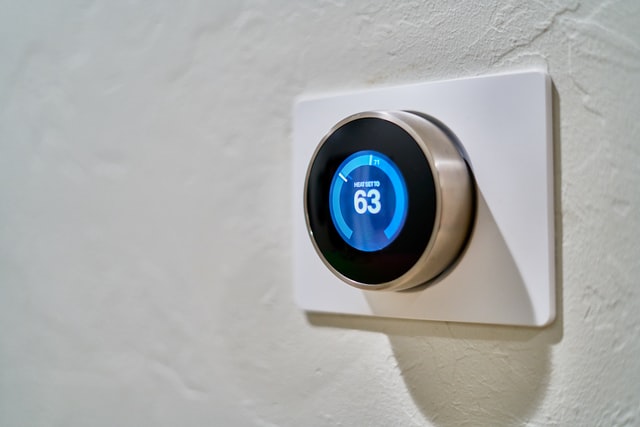HSE Advises on COVID and Ventilation in Offices
The advice includes how to ventilate rooms whilst keeping them warm, monitoring indoor air quality, and safely ventilating vehicles. What are the Legal...
Read Full Article
The Health and Safety Executive has expanded its advice for employers to provide adequate ventilation in their workplaces during the pandemic.
This guidance is intended to help employers identify and take action in poorly ventilated areas. It also provides guidance on other factors to consider when assessing the risk from aerosol transmission, and determining whether adequate ventilation is being provided to reduce this risk.
Ventilation measures are considered the most vital engineering mechanisms in infection control within buildings. Research from both REHA and CIBSE shows that adequate ventilation and effective air distribution can minimise the risk of cross-infection from 1.5 metres onward.
The HSE states that the priority for risk assessments is to identify areas of the workplace that are usually occupied and are poorly ventilated.
There are some simple ways to identify poorly ventilated areas:
You can improve natural ventilation by fully or partially opening windows, air vents and doors (but not fire doors). Buildings are designed to provide an adequate amount of ventilation and, where this is through windows and air vents, you should be able to open them. If they cannot be opened, the ventilation in that area will be affected.
If you identify an area that requires improvement, you should decide if that area should continue to be used until improvements are made.
It is important not to close windows or doors completely when people are using or occupying a naturally ventilated area. This can result in very low levels of ventilation.
Lower temperatures and windy weather conditions in the winter months will increase natural ventilation through openings. This means you don’t need to open windows and doors as wide – look to see if trickle vents can be opened.
Airing rooms as frequently as you can also improve ventilation. Open all the doors and windows fully to maximise the ventilation in a room. It may be better to do this when the room is unoccupied.
It is recommended that you can use local air cleaning and filtration units to reduce airborne transmission of aerosols where it is not possible to maintain adequate ventilation.
However, these units are not a substitute for ventilation. You should prioritise any areas identified as poorly ventilated for improvement in other ways before you think about using an air cleaning device.
If you decide to use an air-cleaning unit, the most suitable types to use are high-efficiency filters or ultraviolet-based devices.
Any unit should be appropriate for the size of the area they’re used in to ensure they work in the way they are intended to.
Make sure workers switch on ventilation systems while they’re using work vehicles. They should be set to draw in the fresh air and not to recirculate it.
Encourage your employees to keep vehicle windows open. If it’s cold they can leave the heating on to keep the vehicle comfortable.
If it’s safe to do so, opening doors of vehicles between different passengers will help to change air quickly. Opening vehicle windows fully for a few minutes can also help clear the air before anyone else gets in.
The Department for Transport has guidance on making taxis and public hire vehicles COVID-secure. There is also HSE advice on social distancing in vehicles during the pandemic.
Picture: a photograph of a temperature gauge on a wall
Article written by Ella Tansley | Published 04 March 2021
The advice includes how to ventilate rooms whilst keeping them warm, monitoring indoor air quality, and safely ventilating vehicles. What are the Legal...
Read Full ArticleSAV Systems' AirMaster AM 1000, a mechanical ventilation unit, has been awarded Passivhaus Component certification. The flagship AM 1000 is the first...
Read Full ArticleBureau Veritas is stressing the need to carry out indoor air quality surveys, swab-sampling programs and quantification of fresh air assessments, to ensure premises...
Read Full ArticleBiojet, from CPA Engineered Solutions, is a high volume air cleaning device that claims to deactivate up to 99.99 per cent of viruses (including coronavirus), mould and...
Read Full ArticleVentilation measures are considered the most vital engineering mechanisms in infection control within buildings. Research from REHA and CIBSE shows that adequate...
Read Full ArticleA British firm has developed a new system designed to help buildings with air management systems make their air supply secure against airborne pathogens. As COVID-19...
Read Full ArticleA policy paper launched at the Building Engineering Services Association’s World Ventilation Day event suggests there is a “two-year window of...
Read Full ArticleWith hay fever affecting one in four adults, how can workplace managers ensure sufferers are comfortable at work during the hay fever season? Hay fever season usually...
Read Full ArticleInnovative Proptech companies such as LightFi are paving the way to net-zero by helping buildings become more energy efficient whilst promoting occupant health and...
Read Full ArticleAn awareness campaign to promote the critical role of building ventilation has been launched by a coalition of scientists, academics, engineering bodies and environmental...
Read Full Article